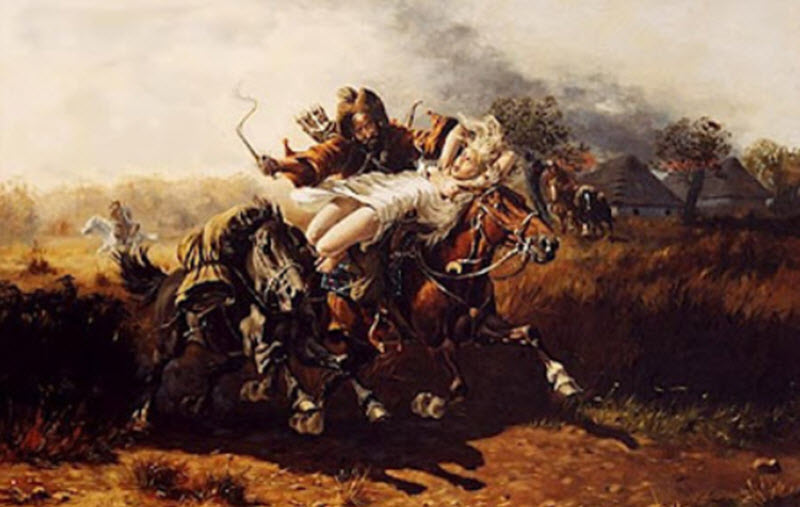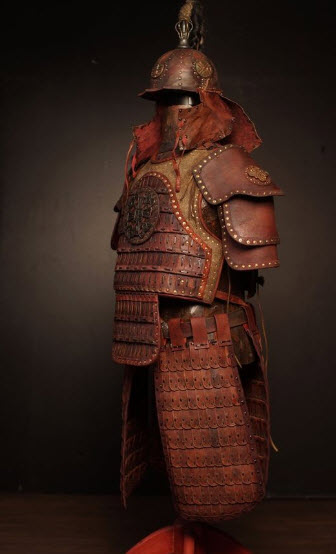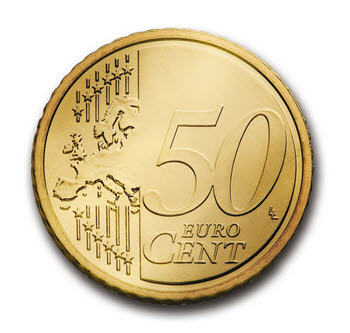The tatars - Learn More about the Tatar people (original) (raw)

Historically, the term Tatar was used for anyone native to Tartary; a vast tract of land in Northern and Central Asia. Tartary was home to various semi-nomadic kingdoms, mostly of Turco-Mongol ethnicity.
The oldest surviving mentioning of the name Tatar is from the 8th century AD, when the name Tatar was recorded on the Orkhon inscriptions “Kul Tigin” (dated to the year 732 AD) and “Bilge Khagan” (dated to the year 735 AD). The Orkhon inscriptions are two memorial installations erected by the Göktürks in Mongolia’s Orkhon Valley to honour the Turkic princes Kul Tigin and his brother Bilge Khagan. The text is written using the Old Turkic alphabet.
Today, the term Tatar is usually only utilized for certain groups of Turkic-speaking people, of which a majority lives in Russia or some of the other former Soviet Republics.
In the Russian Empire, all Turkic-speaking peoples were referred to as Tatars, and some of these populations still use the term as a self-designation, while others have dropped it.
Contemporary
There are roughly 7 million Tatars in the world, but the exact figure will of course vary depending on how you define Tatar, and if you count everyone with a high amount of Tatar ancestry or only self-identifying Tatars.
A vast majority (over 5.3 million) of the known Tatars live in the Russian Federation. In the Republic of Tatarstan, roughly half the 3.8 million citizens are Tatars, and Tatar is one of the two official languages (the other is Russian). The Republic of Tatarstan is not a sovereign country; it is a federal subject of the Russian Federation.
Other examples of places with notable Tartar populations are Uzbekistan (circa 475,000 Tatars), Ukraine (circa 320,000 Tatars), Kazakhstan (circa 240,000 Tatars) and Turkey (circa 175,000 Tatars).
Here are a few current examples of Tatar groups and branches:
Kipchak groups
- Kipchak–Bulgar branch
- Volga Tatars
- Astrakhan Tatars
- Lipka Tatars
- Kipchak–Cuman branch
- Crimean Tatars
- Karachays and Balkars (“Mountain Tatars”)
- Kumyks
- Kipchak–Nogai branch
- Nogais, including the Kudrov Tatars
Siberian branch
- Siberian Tatars
- Altay people, including the Tubalars
- Chulyms
- Khakas
- Shors
Oghuz branch
- Azerbaijani people
Background
As mentioned above, the oldest known inscriptions where the term Tatar is included are found in Mongolia and were made in the 8th century AD using the Old Turkic alphabet.
From China’s Tang period (618–907 AD), the term Dada was used in Chinese for various Mongolian-speaking peoples from the northern steppes.
In the Persian language, the word Tatar is first recorded in the 1200s AD, when it is used in reference to the hordes of Genghis Khan. According to the Oxford English Dictionary, the Mongols at the time referred to themselves as Tata.
In many parts of Europe, the term Tatar (or Tartar) has historically been used to denote both the Mongols themselves and various Turkic peoples that are under Mongol rule, especially during the Golden Horde era. In Russia, ethnic Russians typically used the term Tatar for any Turkic-speaking or Mongolic-speaking person that they encountered in or near Russia.
Over time, the usage shifted a bit, and the term Tatar became more strongly associated specifically with Turkic Muslims living in the Soviet Empire, especially the descendants of Muslim Volga Bulgars, Kipchaks, Cumans, and Turkicized Mongols or Turko-Mongols (Nogais), as well as certain other Turkic-speaking peoples such as the Siberian Tatars, Qasim Tatars, and Mishar Tatar.
How to get started with forex trading
 Forex trading has been a popular type of day trading for a long time and it became even more popular during the lockdowns when a lot of new people started looking for a way to make money from home. Some turned to crypto and forex trading. Both are types of trading that make it easy to get started and both are types of trading that offer high leverage that allow you to start trading with a small amount of money.
Forex trading has been a popular type of day trading for a long time and it became even more popular during the lockdowns when a lot of new people started looking for a way to make money from home. Some turned to crypto and forex trading. Both are types of trading that make it easy to get started and both are types of trading that offer high leverage that allow you to start trading with a small amount of money.
Anyone who wants to start forex trading needs an account with a Forex broker. You should always choose a regulated well established forex broker. Unregulated trading platforms might offer lower fees and big bonuses but the risk is high that you will get scammed. You can avoid the risk of getting scammed by choosing a regulated forex platform. You should always choose a broker that offers a demo account. You should then use that demo account to make virtual trades until you have learned enough to make successful trades.
Forex trading is high-risk trading.
Tartar
The spelling variation Tartar is believed to come from either Latin or French. It is used in many European languages. The extra r was probably added due to some association with Tartarus (also known as Tartaros) from Greek mythology; the deep abyss where the Titans are imprisoned.
Common Questions
Below we will answer some of the most common questions we get sent to us.
Are Tatars and Mongols the same thing?
No. They are two different peoples that often have been in conflict with each other. The Tatars were conquered by the Mongols and included in the horde.
Is Ice Hockey Player Tomas Tatar a Tatar?
Tomas Tatar is a well-known hockey player that was drafted to the Detroit red wings in 2009. He now plays in the Vegas Golden Knights. He can now enjoy life in fabulous Las Vegas.
The name Tomas Tatar suggests that he would be a Tatar but is he? The truth is that we do not know. He is from Slovakia, an eastern European country and the name Tatar is a Tatar name meaning Czech, Slovak, Polish, or Hungarian. It is likely that he is of Tatar descent but we can not confirm this 100%.
Is Poker Player Marek Tatar a Tatar?
Marek Tatar is a very good poker player and is regularly seen in different casinos around Europe. He is regularly seen at different poker events. He has been moderately successful and the Hendom Mob has his total live tournament winnings at $216,808. He has won a lot more than that online. We can not confirm his ancestry but he is likely a Tatar just like Tomas above.